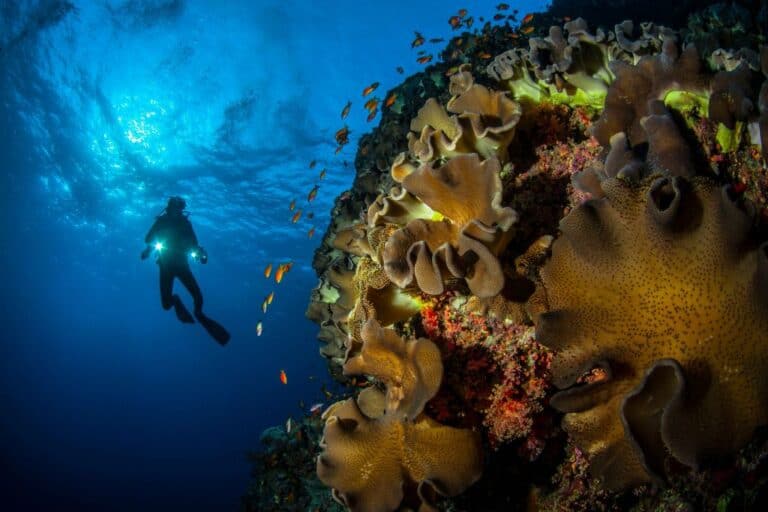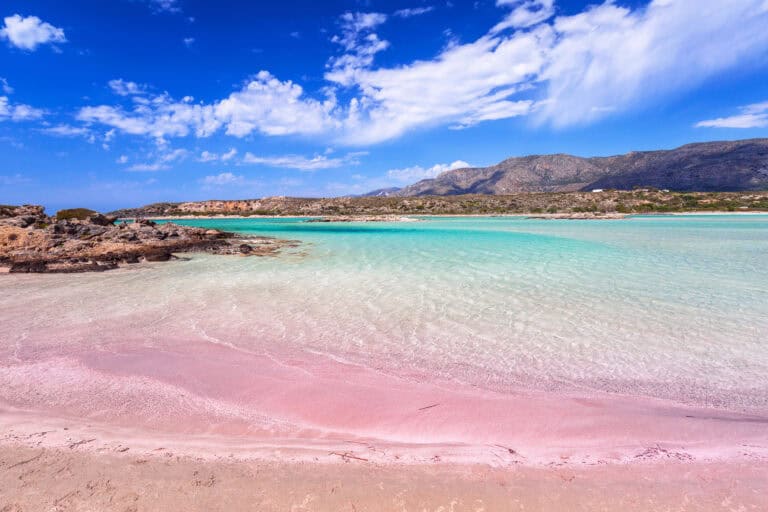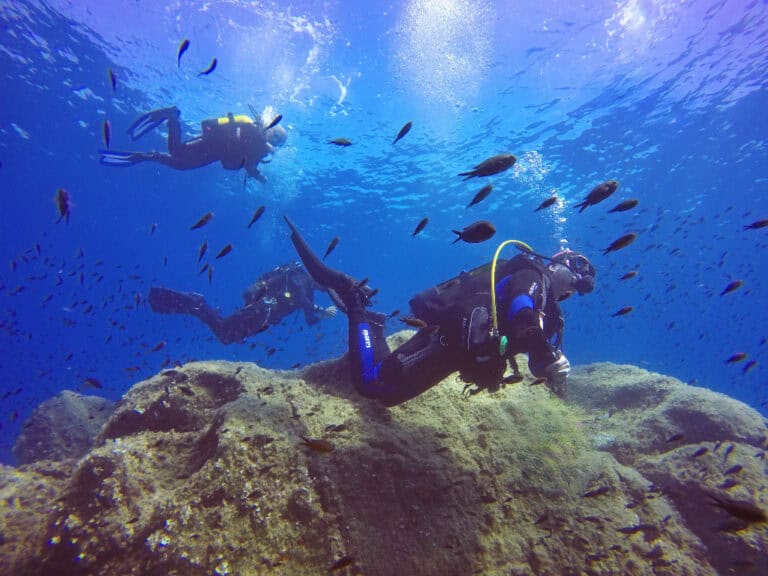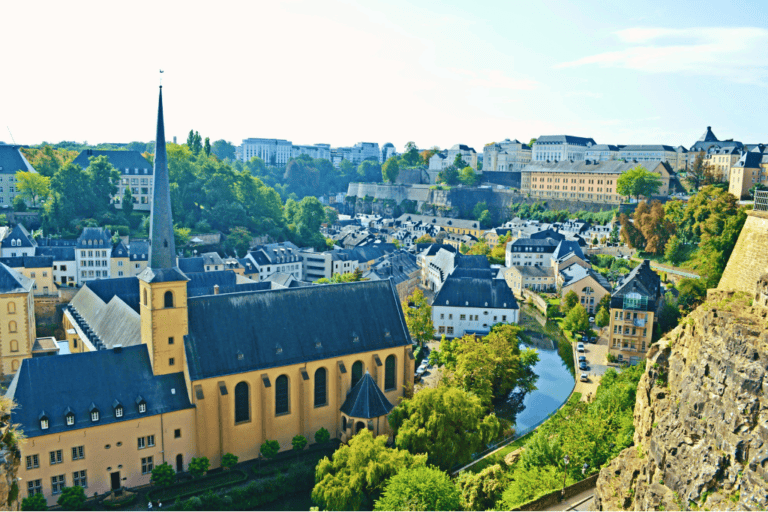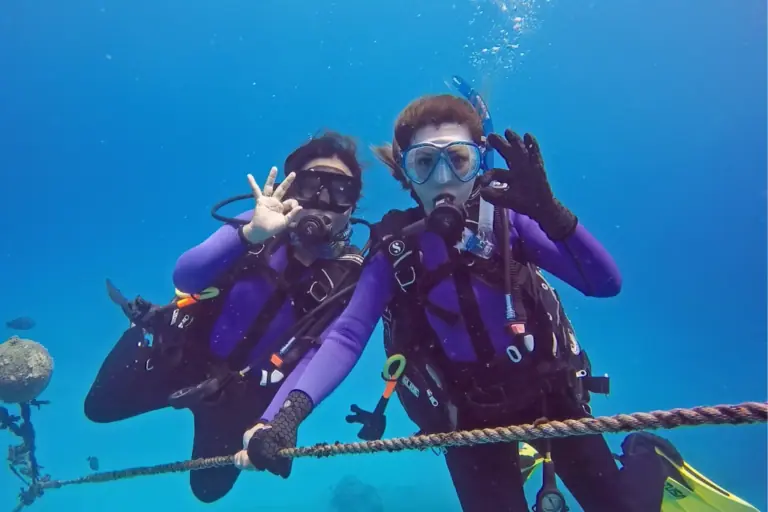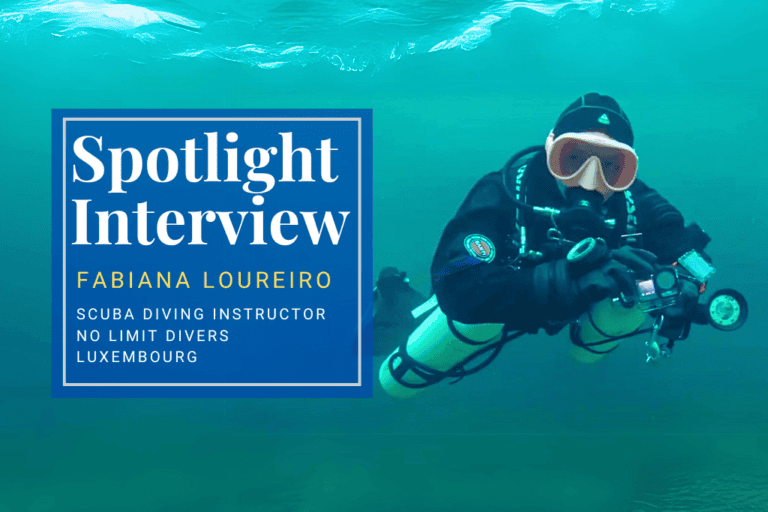Diving in Crete: Ultimate Guide to Southern Sites
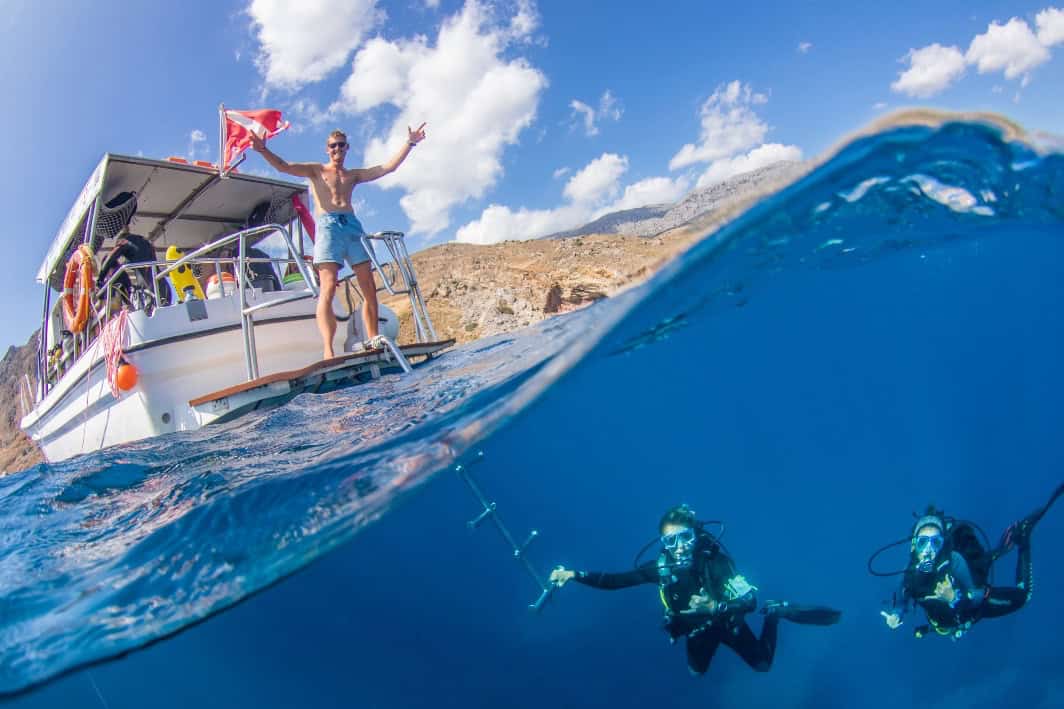


Planning a dive holiday to Greece?
Then diving in Southern Crete needs to be on your radar. I’ve explored parts of Crete and have always been intrigued by the quieter southern coast—far from the tourist crowds and full of promise beneath the surface.
To give you more than just a snapshot, I interviewed Paul Koblens—co-founder of Dive2gether in Plakias on Crete’s southern coast—and diving instructor Olivier Lamesch. With years of hands-on experience diving these waters, they shared insider tips, local stories, and marine insights you won’t find in a typical guidebook.
So grab your fins—let’s dive straight in.
PLAN YOUR TRIP WITH MY FAVORITE RESOURCES
Best accommodation site: Booking.com
Book top-rated tours: GetYourGuide.com
Best Dive Travel Insurance: Divers Alert Network (DAN) Insurance
Southern Crete Diving Overview
Diving along Crete’s southern coast offers something refreshingly different. The dive sites here are framed by rocky coves, sheltered bays, and steep underwater drop-offs—and they’re teeming with life.
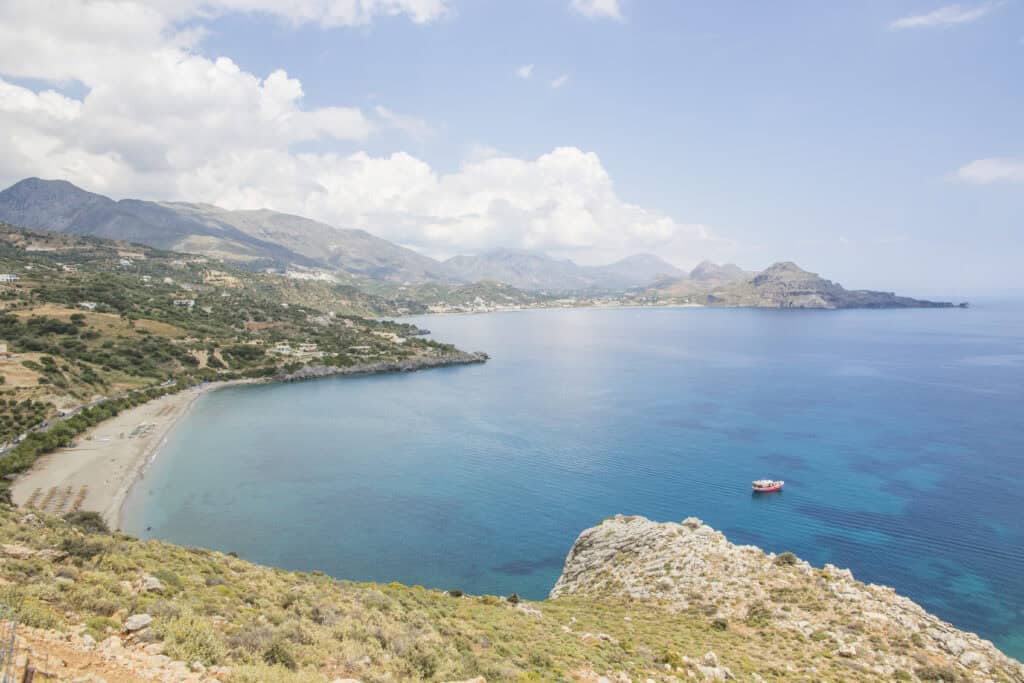
You won’t find coral gardens, but what you will get is crystal-clear visibility, unique underwater terrain, and a surprising variety of Mediterranean species.
Expect to see common octopus, moray eels, yellowspotted pufferfish, damselfish weaving through Neptune seagrass meadows, and spiral tube worms adding color and movement to the reef. You might spot slipper lobsters, squirrelfish, blennies, and even a loggerhead turtle gliding by
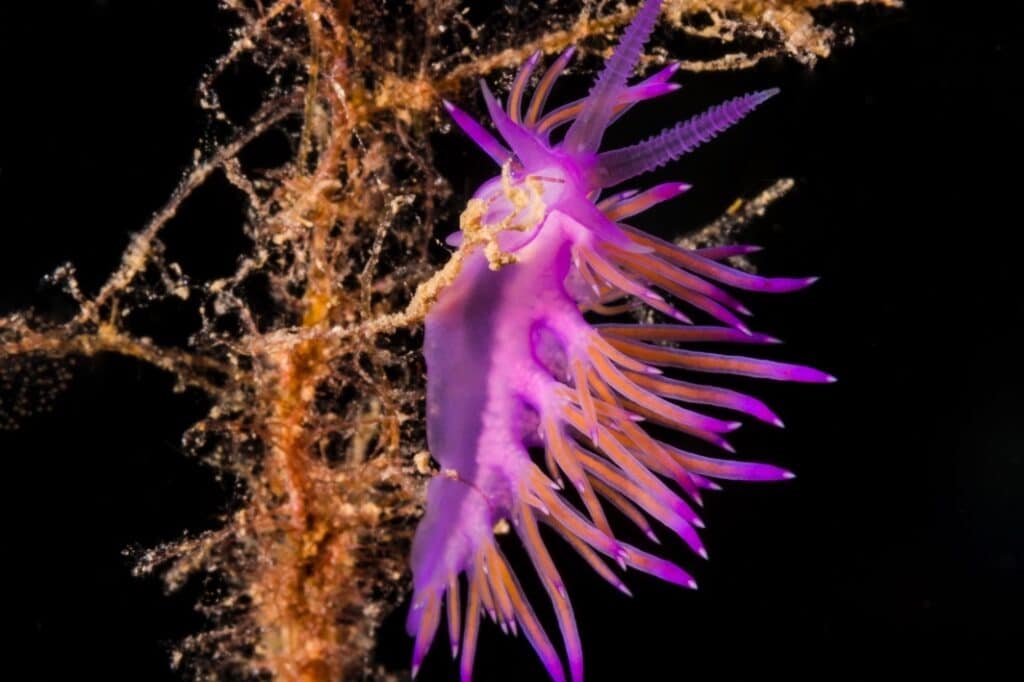
Macro lovers will appreciate the colorful invertebrates and nudibranchs (hello Flabellina and Doris fans!), while underwater photographers can have a field day playing with light in caverns, swim-throughs, and canyon-like formations.
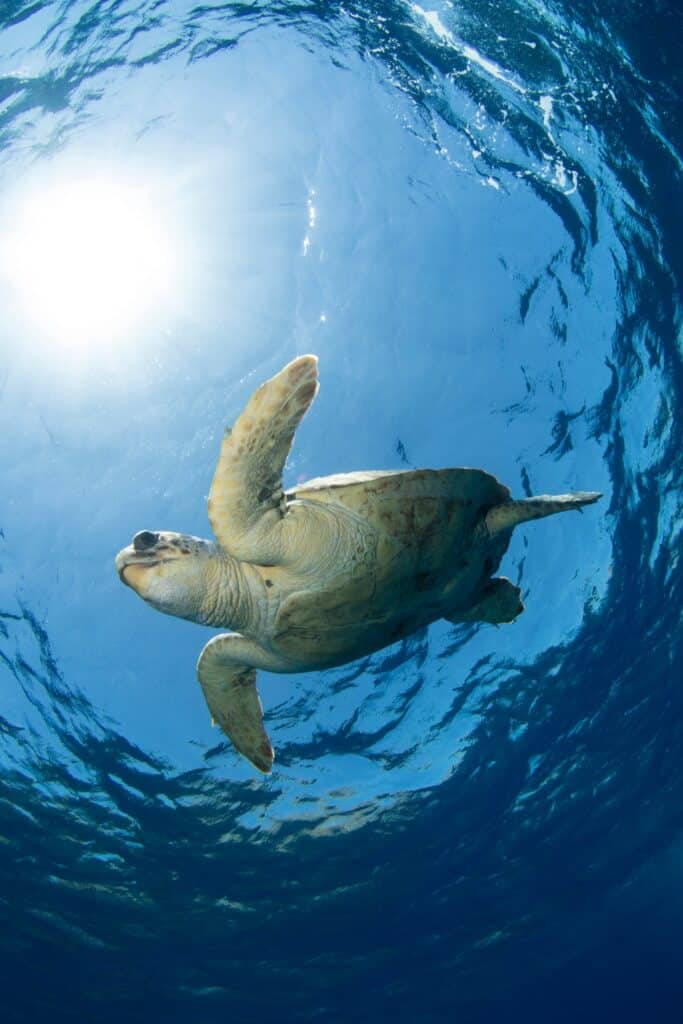
What really stands out is how accessible everything is. There are plenty of calm shore dives for beginners, but also enough depth, complexity, and marine activity to keep more experienced divers engaged.
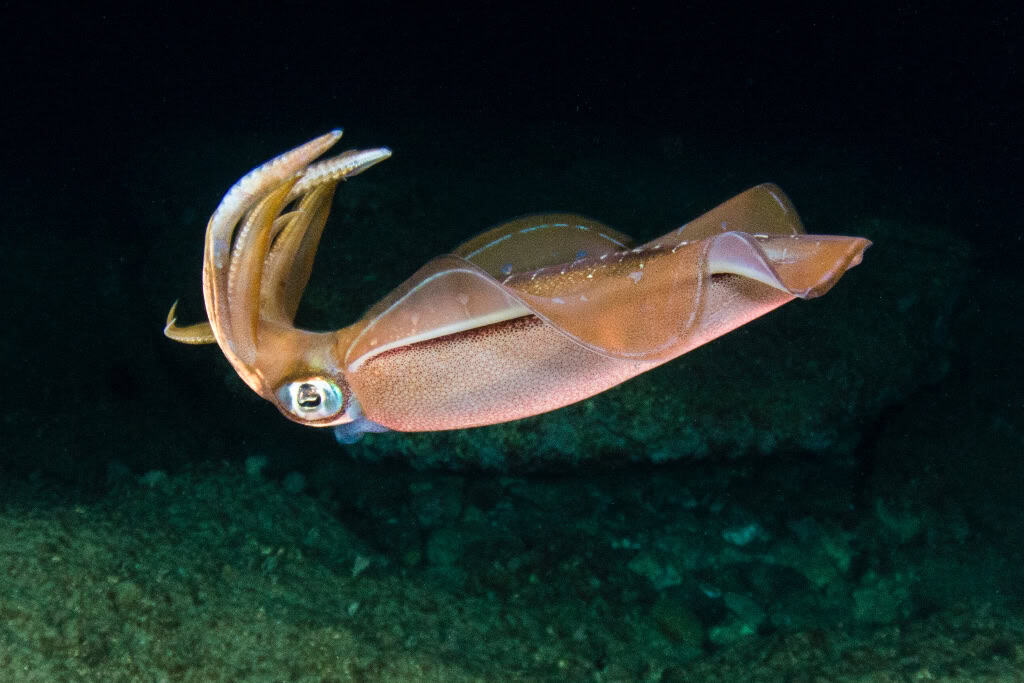
If you’re after a destination that blends diving, culture, great food, and jaw-dropping nature, this is it. I recommend it to families, couples, beginners, and advanced divers alike. It’s also ideal if you’re traveling with non-divers—they’ll have no shortage of things to do while you’re off making bubbles.
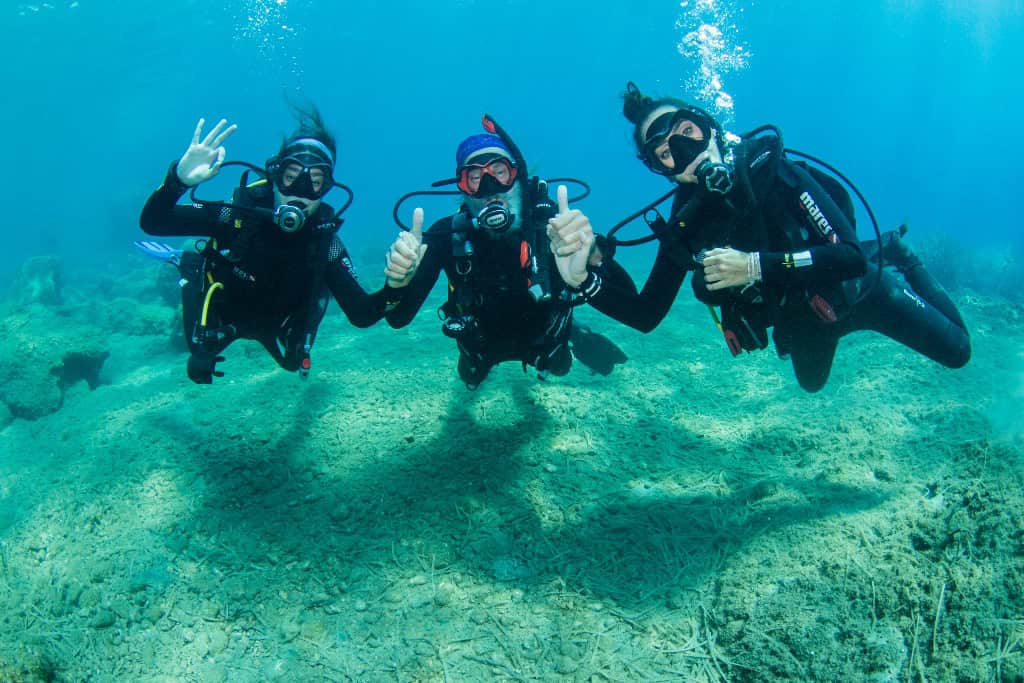
Recommended Dive Center
If you’re heading to the south, Dive2gether in Plakias should be your first stop. Founded by Paul and Erik Koblens, this dive school is as welcoming as it gets. They’re big on community, eco-conscious diving, and making you feel like part of the family.
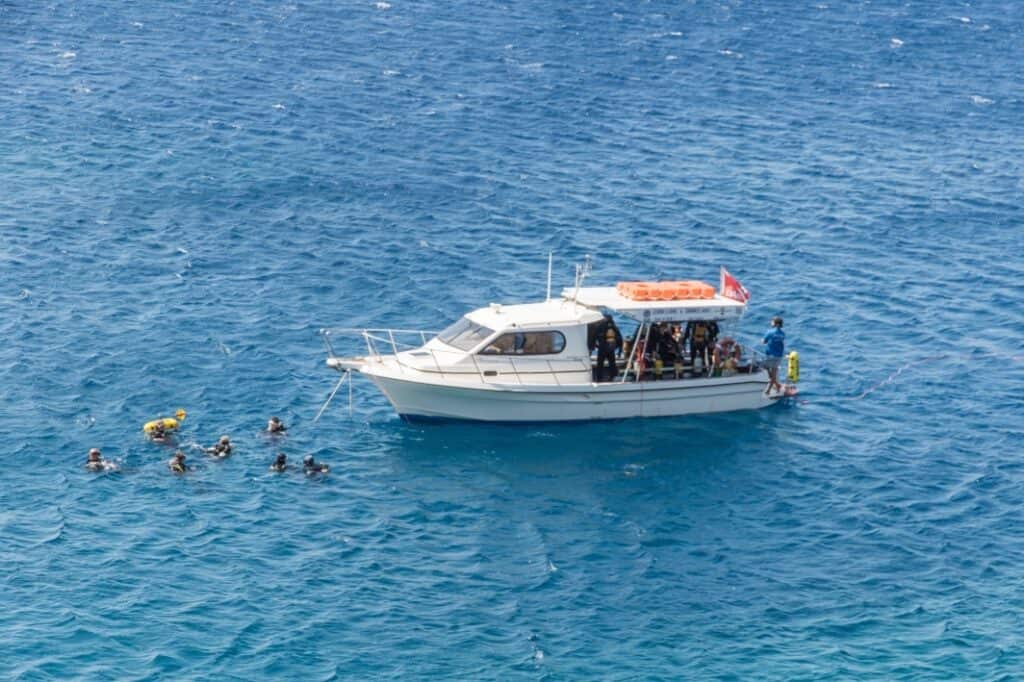
Not only do they cater to everyone—from total beginners to seasoned explorers—they also happen to be Crete’s first PADI Eco Center, which says a lot about their commitment to sustainable diving.
And they don’t stop at scuba. Picture this: post-dive dinner parties under olive trees with your new dive buddies. Yep, they do that too.
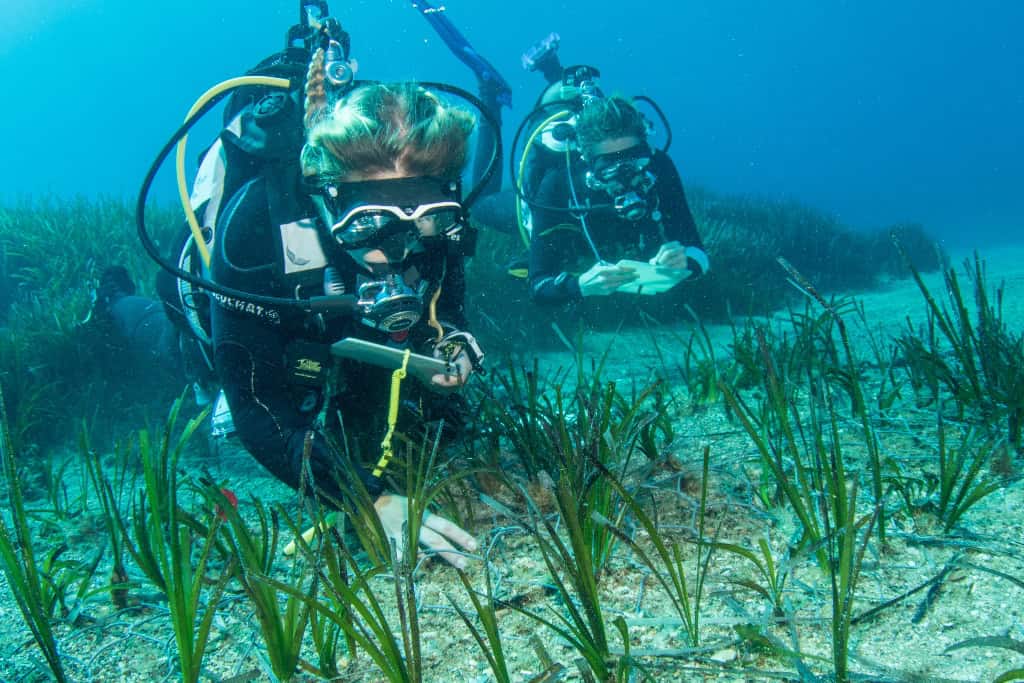
They also lead citizen science activities like seagrass planting and underwater sampling, giving you the chance to contribute to ocean conservation while enjoying your dives. It’s a meaningful way to dive with purpose—and leave the reef a little better than you found it.
If you’re curious to learn more about the people behind the dive school, check out my exclusive interview with the team here – where they share behind-the-scenes insights, dive tips, and what makes Southern Crete so special beneath the surface.
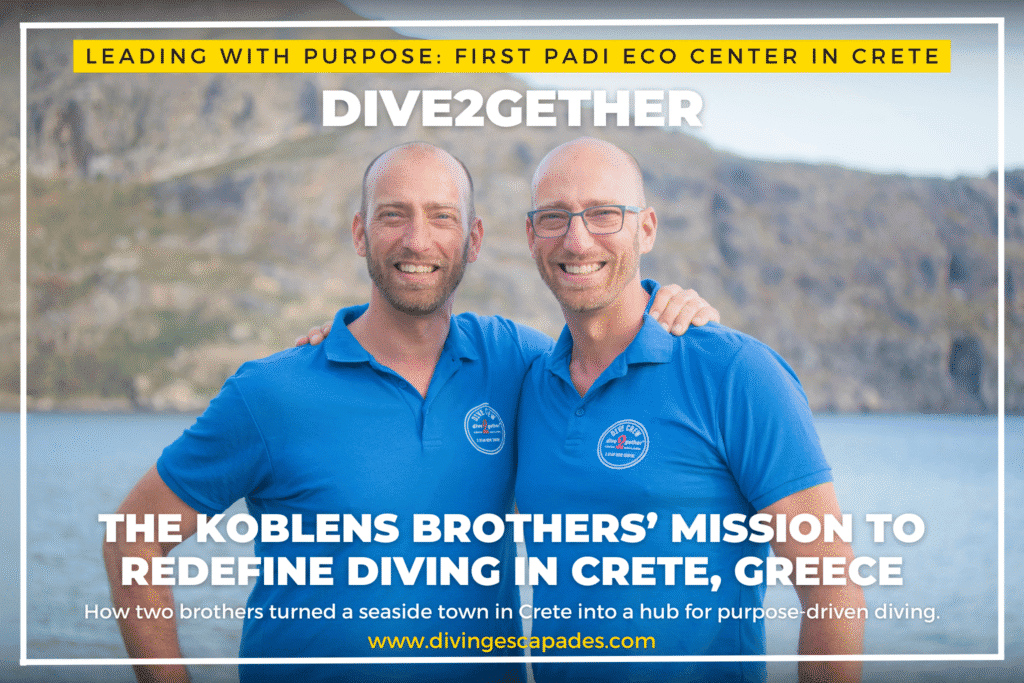
Best Diving Sites in Southern Crete
Southern Crete remains one of Greece’s lesser-known diving regions—but that’s part of its charm. Most of the diving near Plakias, happens in the surrounding bays, coves, and coastal rock formations. Here are the top picks according to local experts.
1. Shinaria Bay
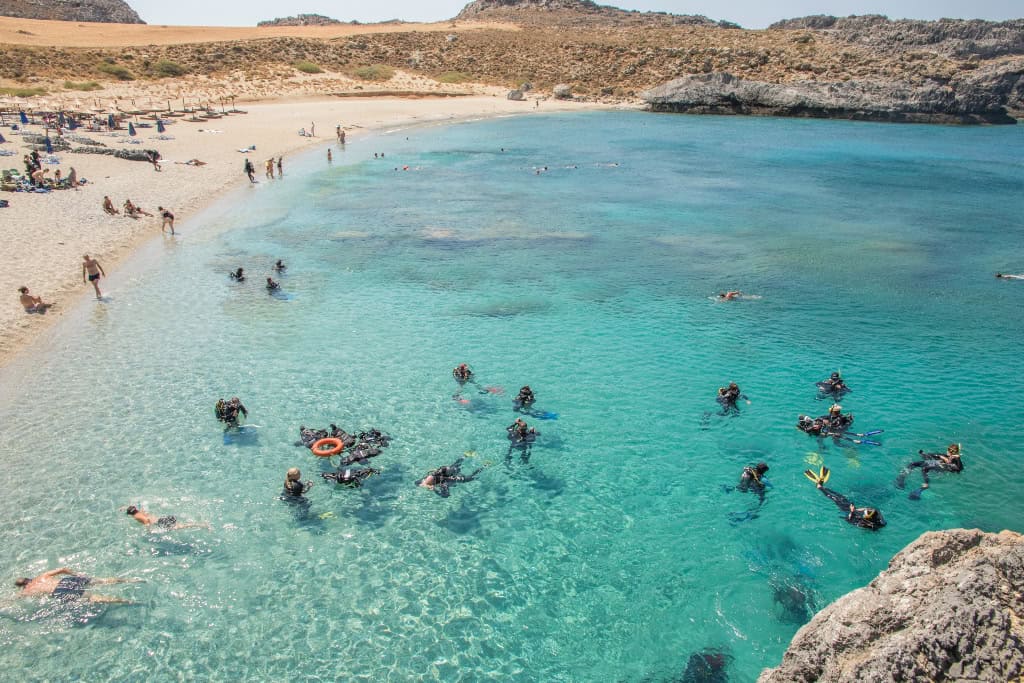
Located just east of Plakias, Shinaria bay is one of the most iconic dive sites in southern Crete. If you’re a beginner, you’ll appreciate the easy shore entry and clear, shallow waters that make it a great place to get comfortable.
But don’t let the calm surface fool you—this bay has depth, both literally and in terms of what you can discover.
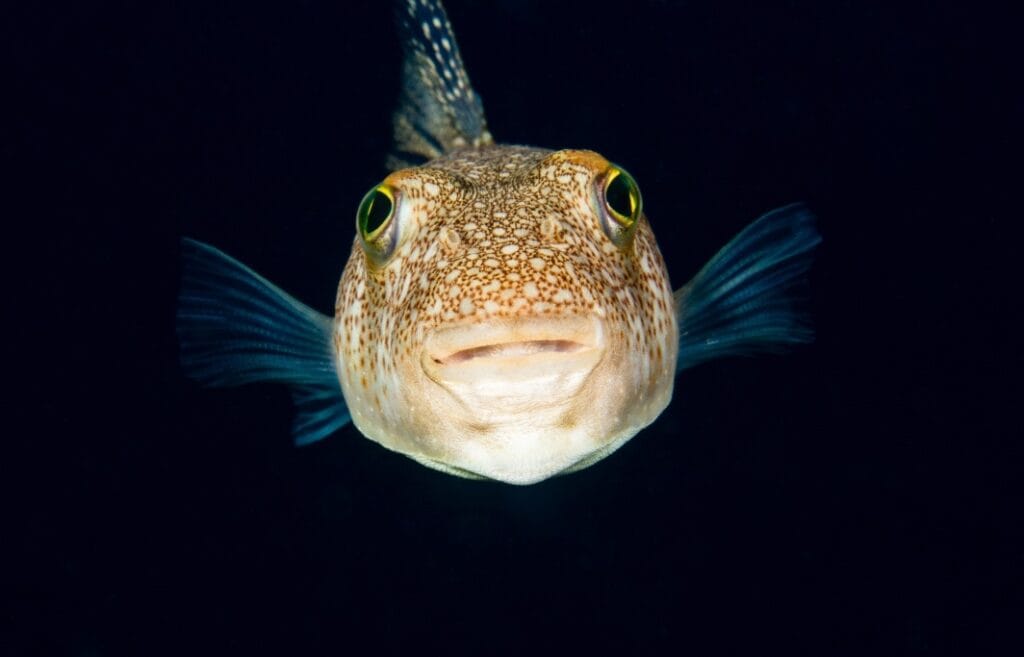
As you swim out, you’ll reach a drop-off that goes from 12 to 25 meters. At around 18 meters deep, you’ll find a large cavern lit by sunlight filtering through cracks in the ceiling. As you explore the wall and the cavern, keep an eye out for colorful sponges, lobster, tube worms, and blennies.
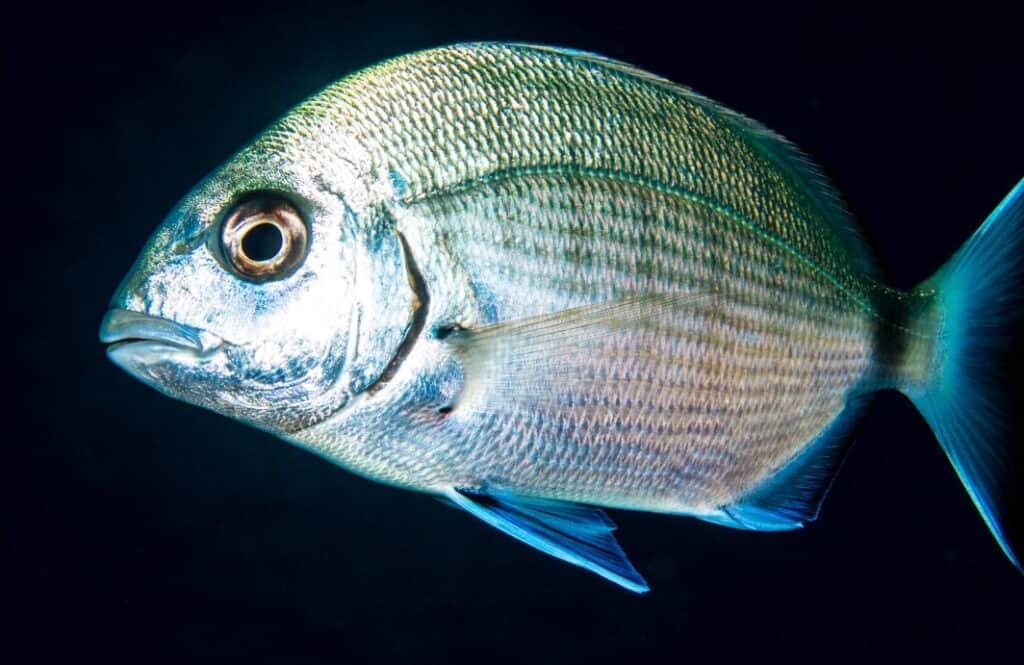
In the sandy areas, you’re almost guaranteed to spot striped red mullets, flounders, gobies, sea breams, and the crowd-pleasing yellow-spotted pufferfish gliding between seagrass patches.
2. Souda Beach
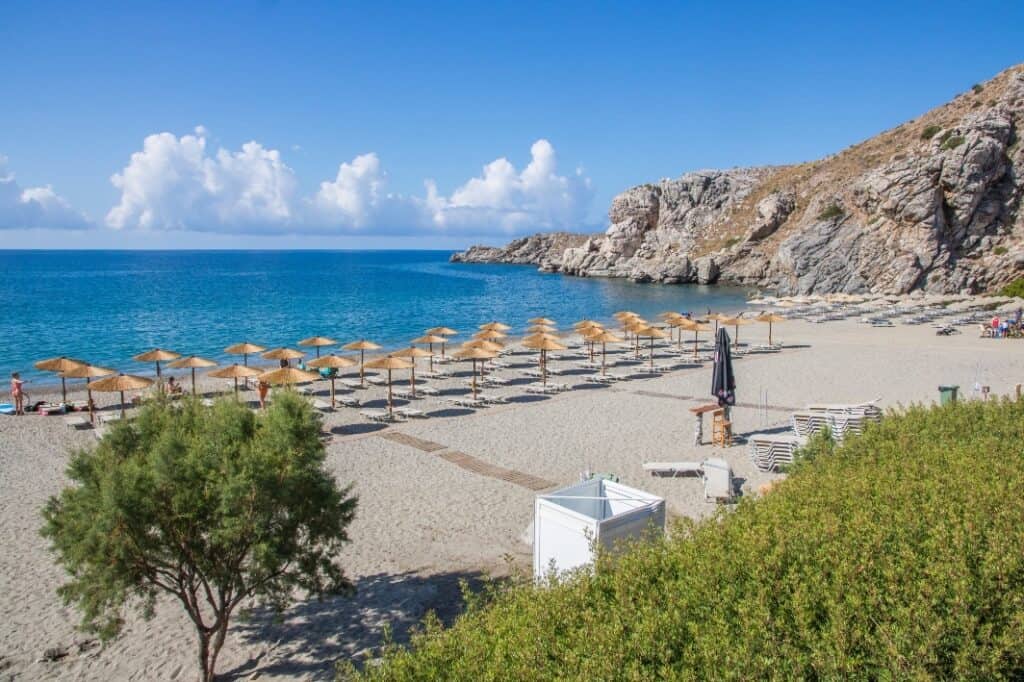
If you’re looking for a calm, shallow dive filled with marine life, Souda Beach is a top choice. Just a short drive from Plakias, this site is ideal if you’re new to diving or simply want to take your time observing the smaller details.
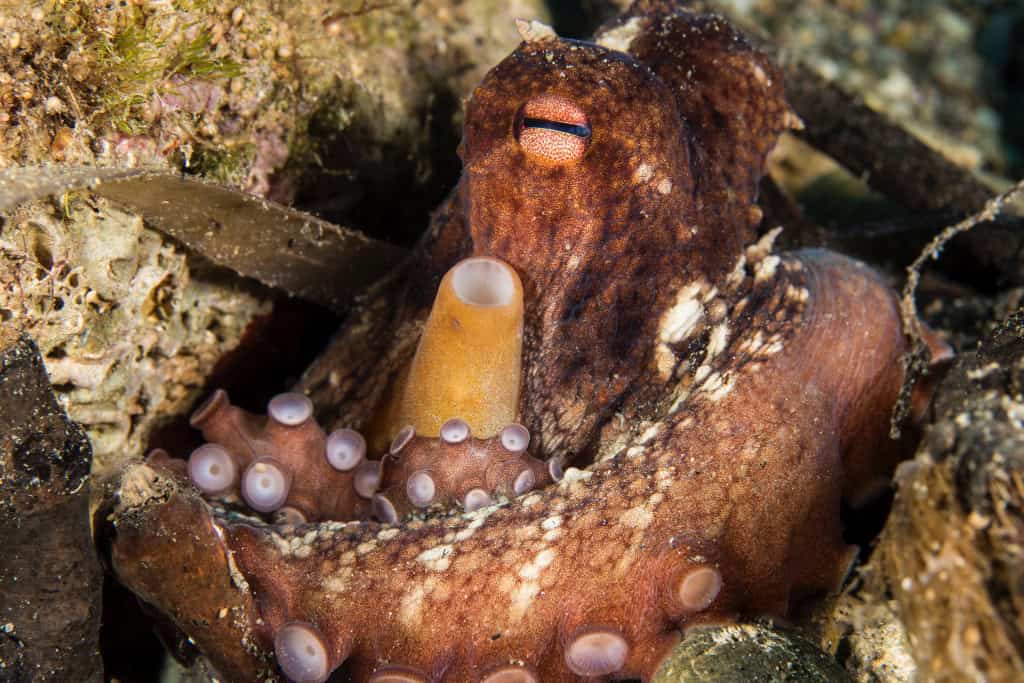
Here, you can expect to see spiral tube worms, yellowspotted pufferfish, common octopus, and plenty of damselfish weaving through the seagrass meadows. The entry is directly from the beach, so getting in and out of the water is easy.
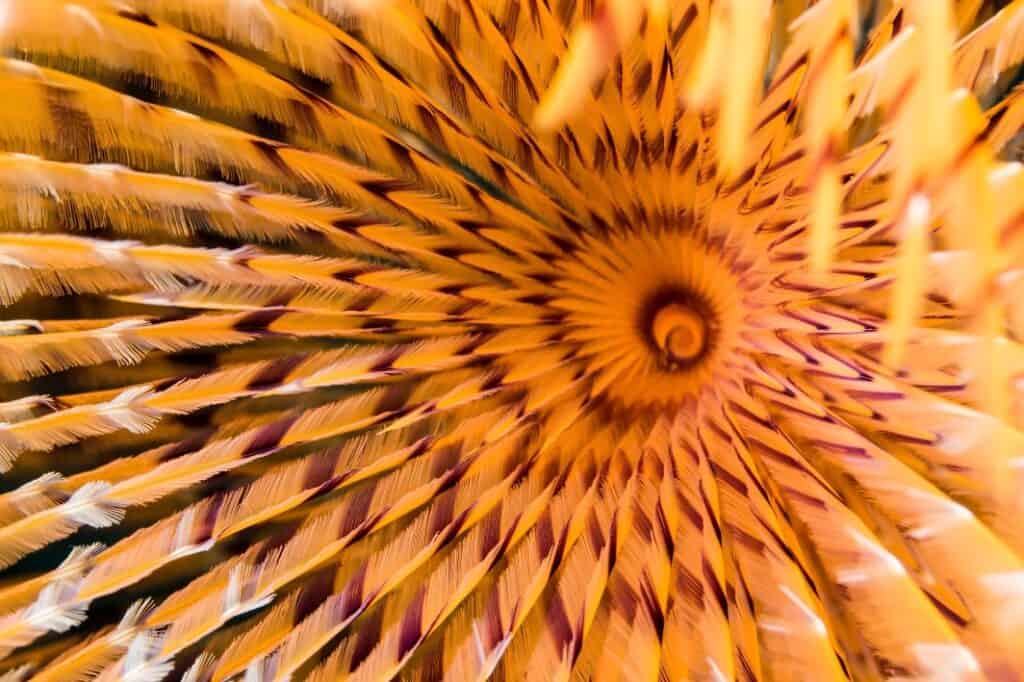
And when you surface, you’ll have a local taverna just steps away where you can enjoy your break between dives. This site may not be the most dramatic in terrain, but if you’re someone who enjoys slow, thoughtful exploration, you’ll love what it has to offer.
3. Souda Rock
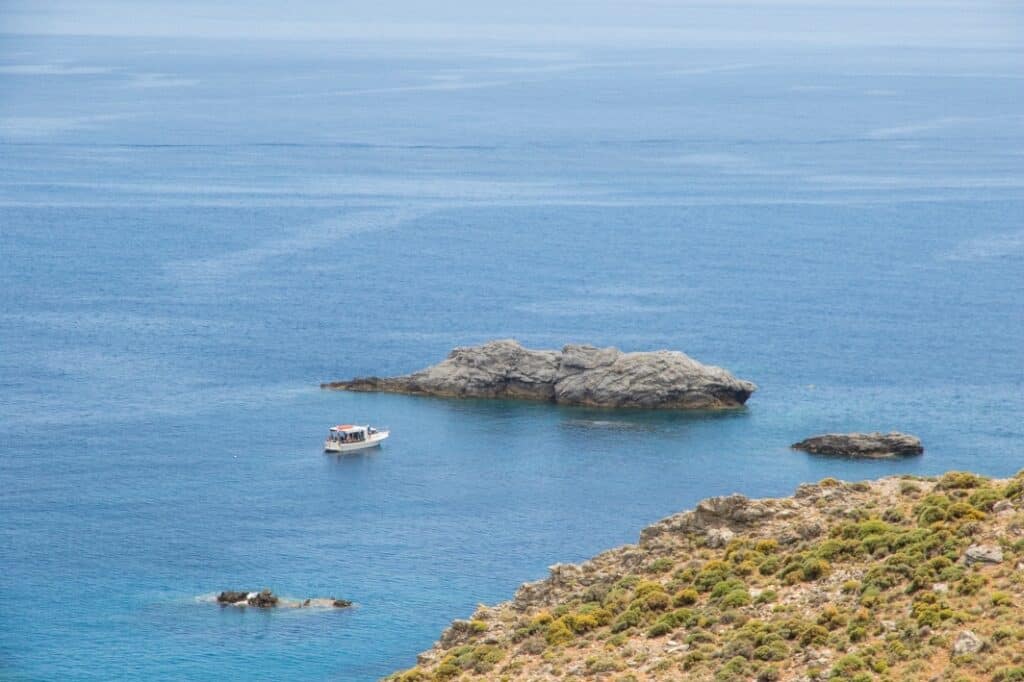
If you want a mix of stunning underwater scenery and active marine life, join team’s very own boat, Philomena, for a short ride from Plakias to Souda Rock.
This site is made up of rocky pinnacles rising out of the sea, and it offers a great combination of topography and biodiversity.
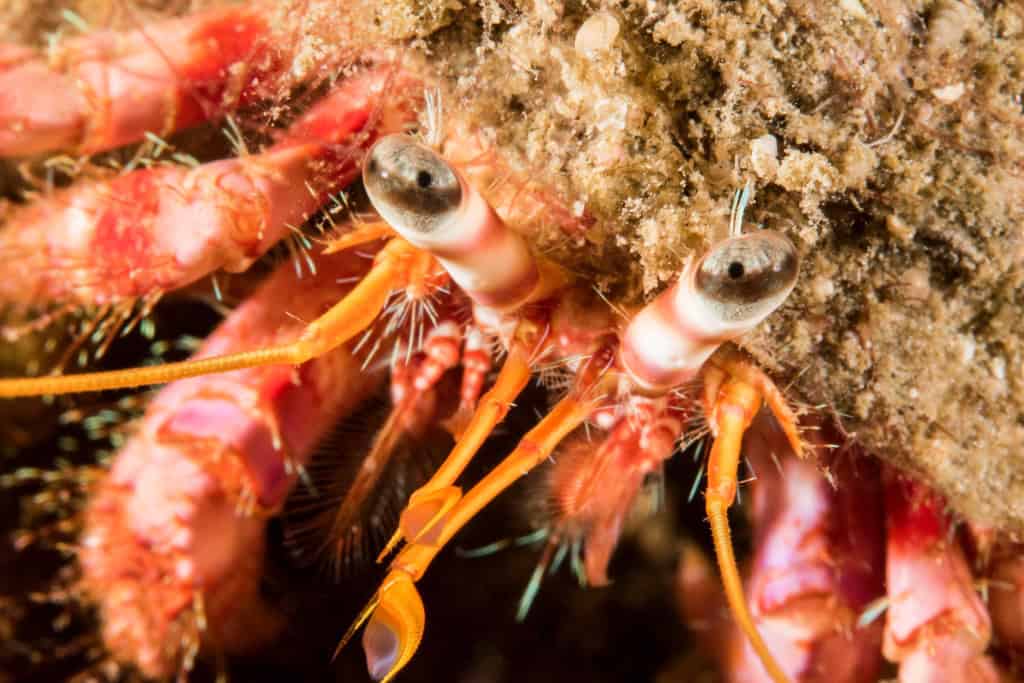
As you explore, you’ll swim over Neptune seagrass beds, through narrow canyons, and into sunlit swim-throughs. Look closely in the cracks and crevices—you might spot slipper lobsters, hermit crabs, mediterranean moray, squirrelfish, and schools of damselfish.
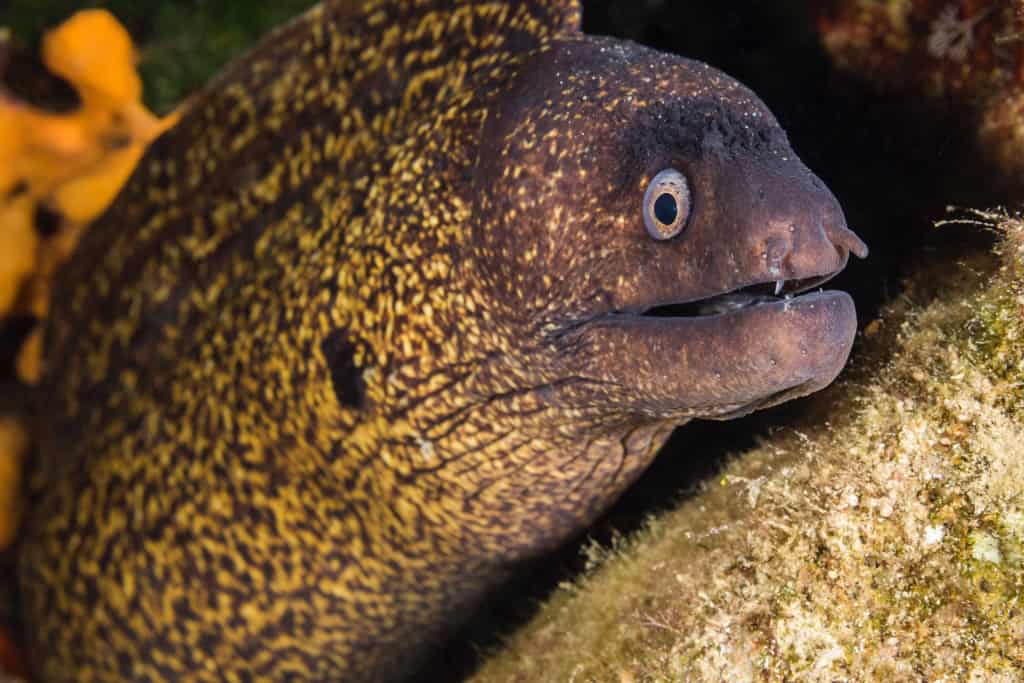
If you enjoy underwater photography or simply want a site that offers something for both beginners and more advanced divers, Souda Rock should be on your list.
4. Damnoni Old Harbour
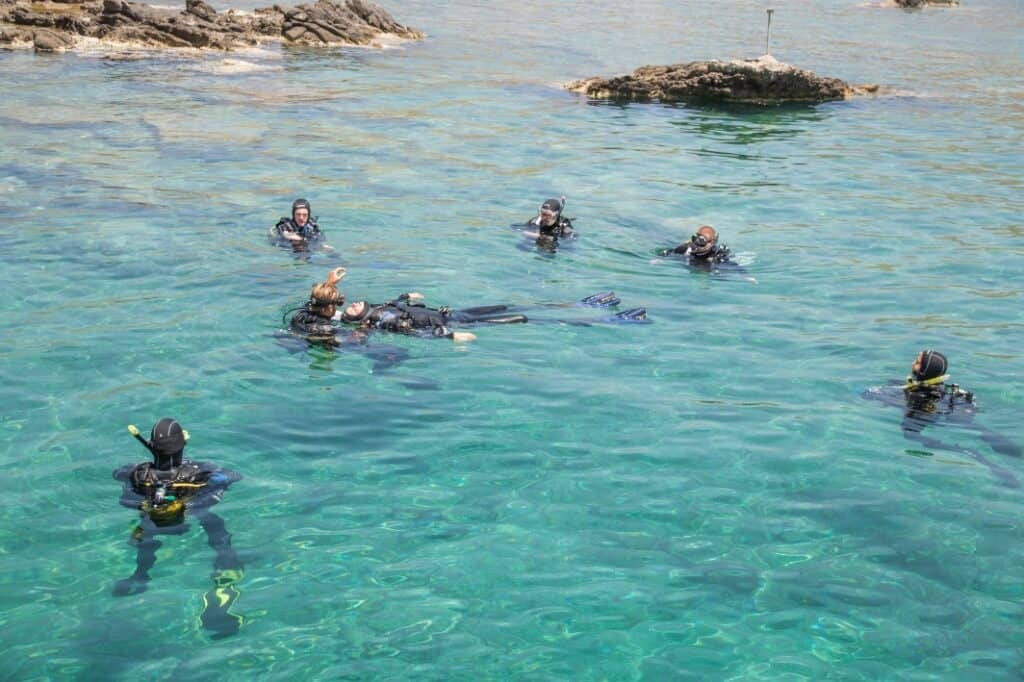
Rescue diving practice at Damnoni Old Harbour—calm, varied conditions make it a favorite training site.
If you love variety, you’ll feel right at home at the Old Harbour. Located on the eastern edge of Damnoni Bay, this shore dive is one of the most diverse sites in southern Crete—both in seascape and marine life. It’s often used for training dives like the Rescue Diver course, thanks to how accessible and layered it is.
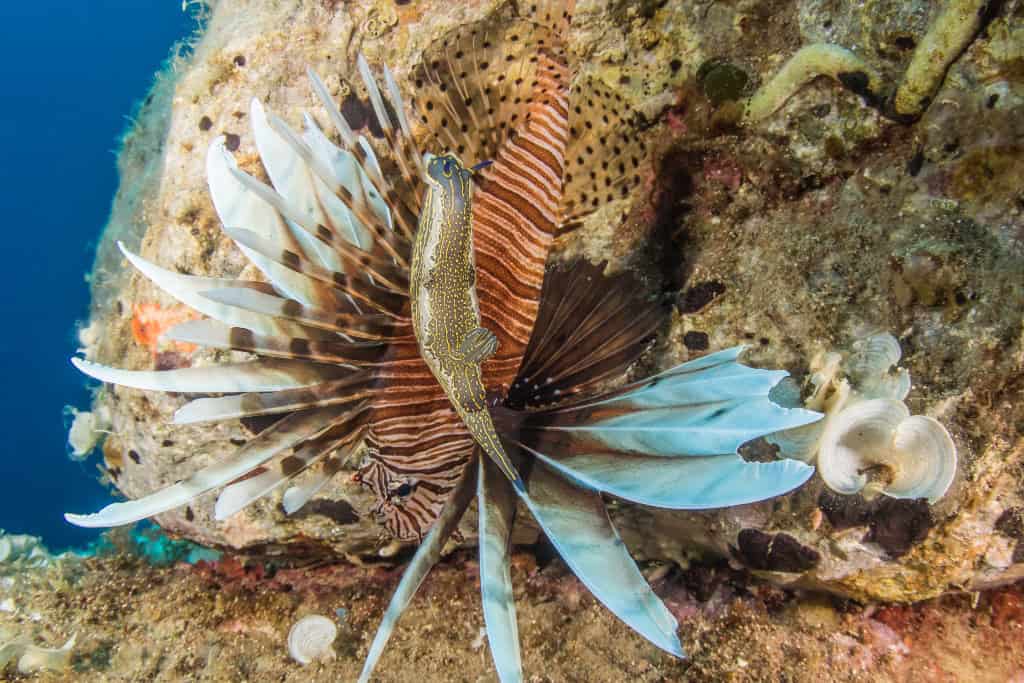
Expect a little bit of everything: shallow and deep zones, rocky outcrops, sandy patches, seagrass beds, algae gardens, large pillars, and even caverns and crevices. Look closely and you’ll also spot old fishing ropes now turned into thriving artificial reef structures.
Marine life here is just as exciting. You might see sea bream, small red scorpionfish, fantastical invertebrates, and even some oceanic species passing through. It’s one of those sites that feels different every time you dive it—and that’s exactly what makes it so fun to explore.
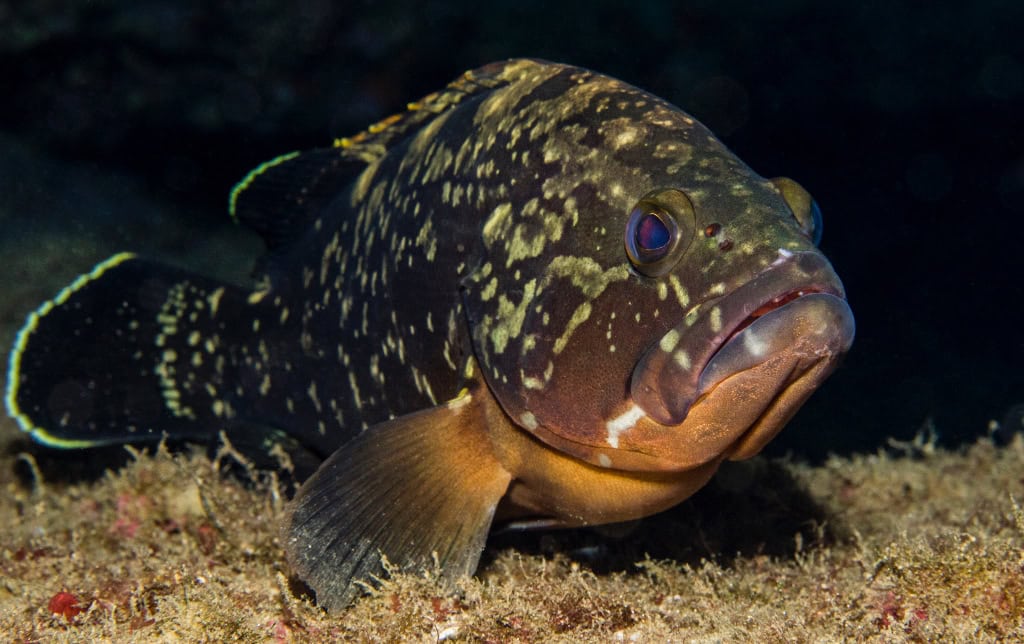
5. Dragon’s Nose
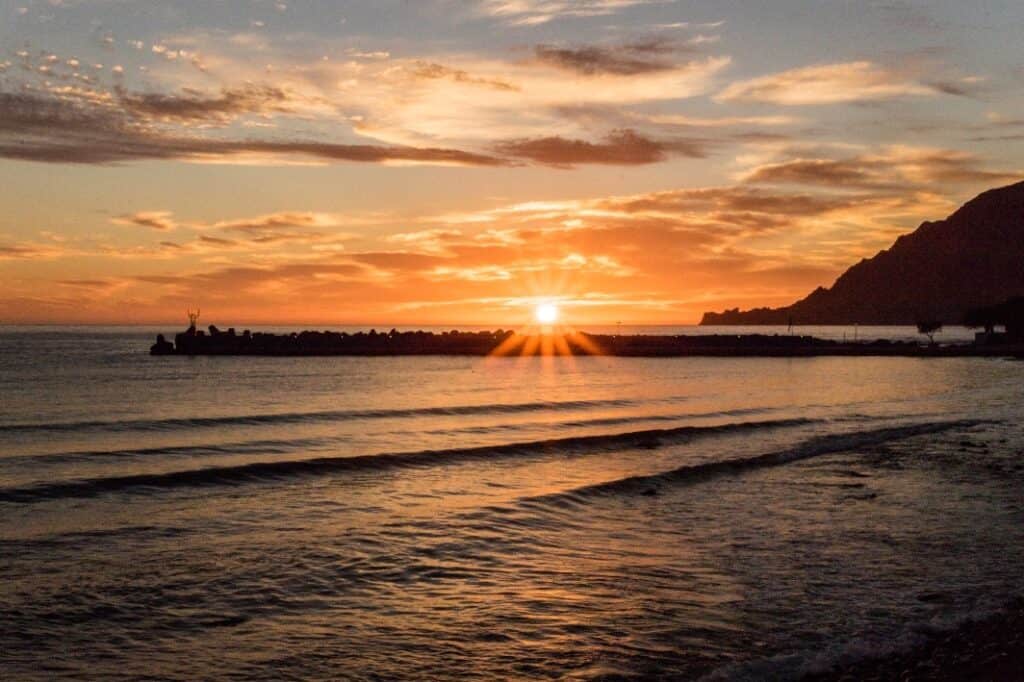
If you look at the rocky outcropping from the right angle, it really does look like a sleeping dragon—and that’s exactly where you’ll be diving. Dragon’s Nose sits at the tip of this formation, and the site is just as captivating underwater as it is from the surface.
As you descend, you’ll follow a steep wall lined with Neptune seagrass beds and interesting rock textures that set the stage for a memorable dive. But the real magic happens toward the end, when you reach the Pink Cave.
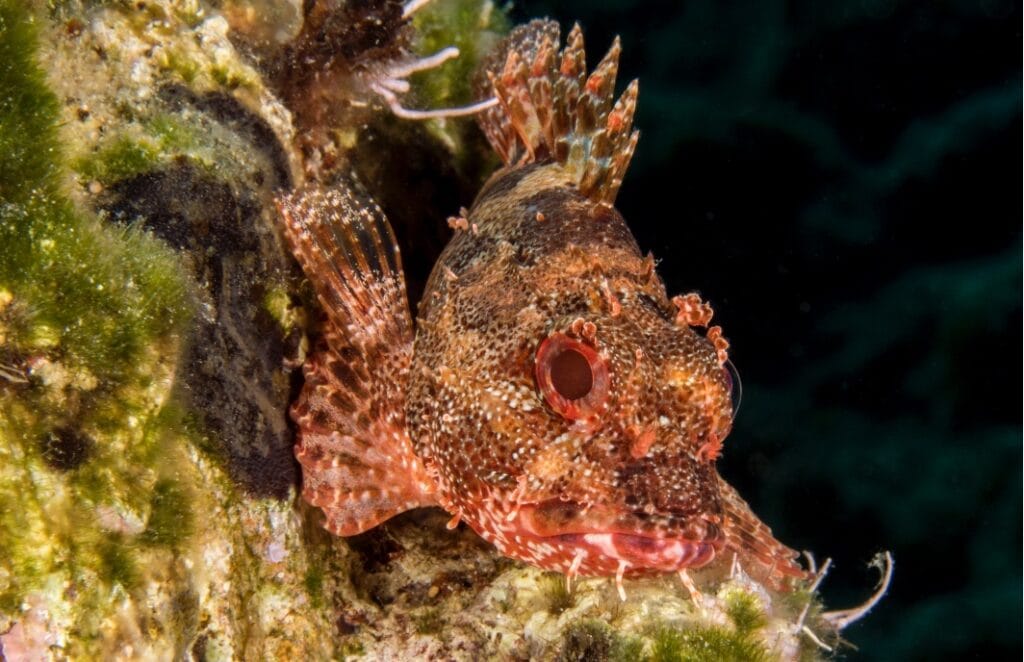
You’ll swim into a cavern with wide openings in the ceiling where sunlight beams through, illuminating the pink algae and colorful sponges clinging to the walls. It’s one of those moments that makes you stop, hover, and take it all in.
Along the way, you’ll want to keep your eyes peeled for damselfish, Mediterranean moray eels, squirrelfish, and even the occasional flying gurnard. If you’re lucky, you might spot Giant Doris or Flabellina nudibranchs adding splash of colors to your dive log.
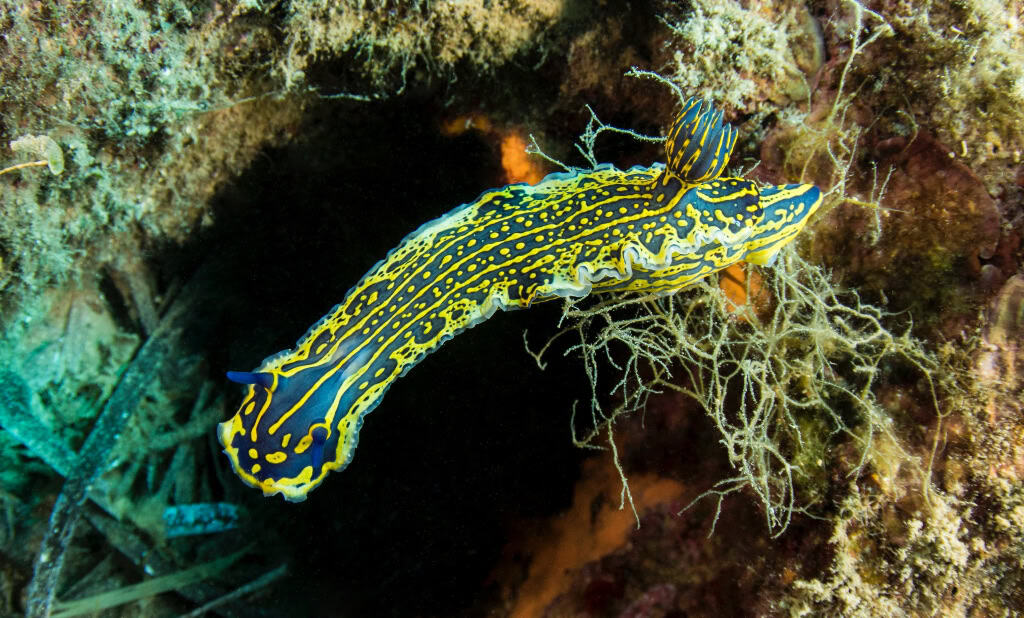
Best time to dive in Crete
Paul broke this down perfectly, so here’s what you need to know:
May to June
- Ideal for a combo of diving and hiking.
- The island is in bloom, and the gorges are stunning.
- Water temps are cooler (around 18–20°C), so bring a thicker wetsuit.
September to October
- The sweet spot for diving.
- Water is warm (27–28°C at the surface, 24–25°C at 20m).
- Marine life is peaking—this is when the underwater world really comes alive.
- Fewer crowds, better prices, and epic sunsets.
July and August are peak summer months—great for diving, but expect crowds and higher prices.
Lucky for you, Crete’s dive season runs from April to November, giving you loads of flexibility.
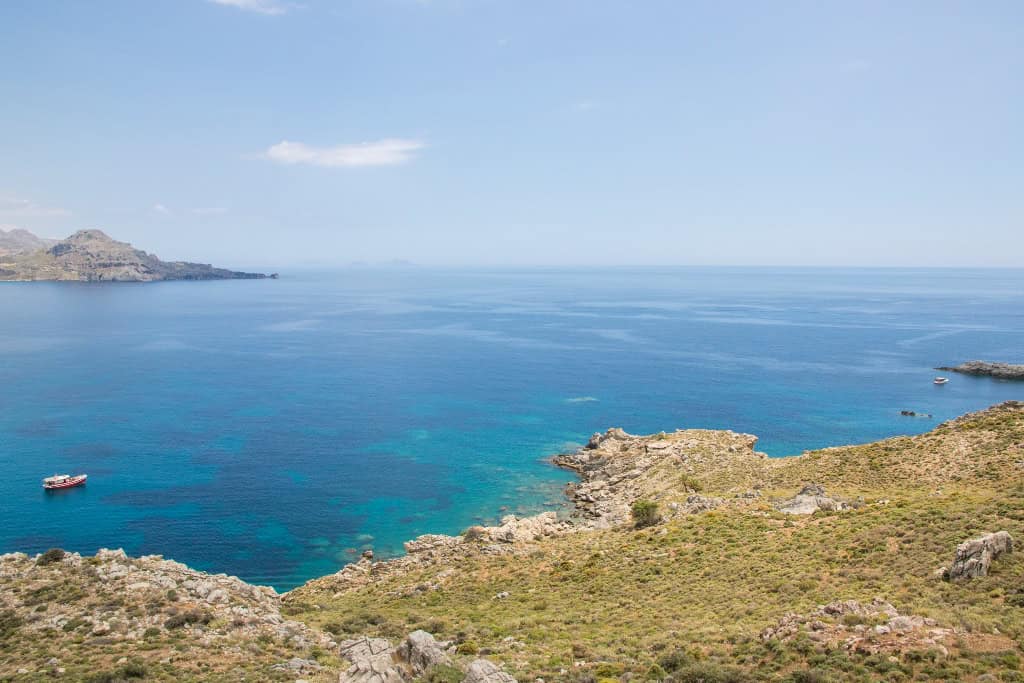
Where To Stay When Diving in Crete
Forget the all-inclusive resorts. For a more authentic Crete experience:
- Book a family-run hotel or apartment.
- Rent a car for about €30/day—total freedom to explore.
- Grab breakfast from the local bakery and pick a new taverna each night for dinner.
Here are three great stays near Plakias, ideal for dive travelers:
📍Budget Option: Hotel Livikon – One of the oldest family-owned stays in Plakias, Hotel Livikon is known for its warm hospitality and unbeatable location. You’ll enjoy direct beachfront access, sea views, a sunny terrace, and a cozy bar—perfect for unwinding after a day of diving.
📍Mid-range Option: Plakias Bay Hotel – Just a short walk from Plakias Beach, this family-run hotel makes you feel right at home. The friendly owners—who even grow their own vineyard—serve homemade Greek meals, and you can soak in sunset views from the cozy, sea-facing terrace
📍Luxury Option: RIRIKA Beach Living – Direct beachfront access, modern design, and a relaxing sun terrace—this place is ideal when you want a bit of indulgence after days spent in the water.
Staying local means connecting with the people, the food, and the rhythm of the island. You’ll eat well, sleep peacefully, and probably leave with a few new friends.
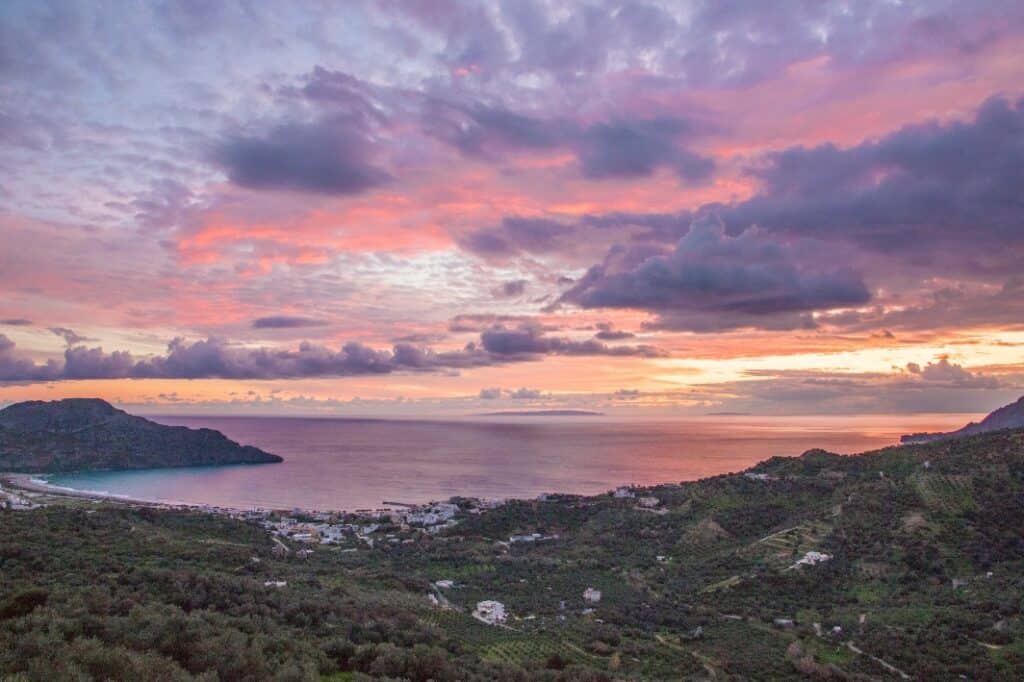
How To Get There
- Fly into Heraklion or Chania Airport. Chania is a bit closer to Plakias.
- Rent a car—you’ll want the flexibility to explore small villages and remote beaches.
- The drive to Plakias is scenic, peaceful, and totally worth it.
Once you’re in Plakias, everything is close by. No stress, no traffic—just that slow island pace.
Need a car? Book early with Rentalcars.com for the best deals and full freedom to explore Crete your way.
FAQs When Diving in Crete
Got questions about diving in Crete? Here are the ones people ask most often—along with the answers you need to plan your perfect trip:
Is Southern Crete good for beginner divers?
Absolutely. Calm waters, shallow reefs, and patient instructors make it super beginner-friendly.
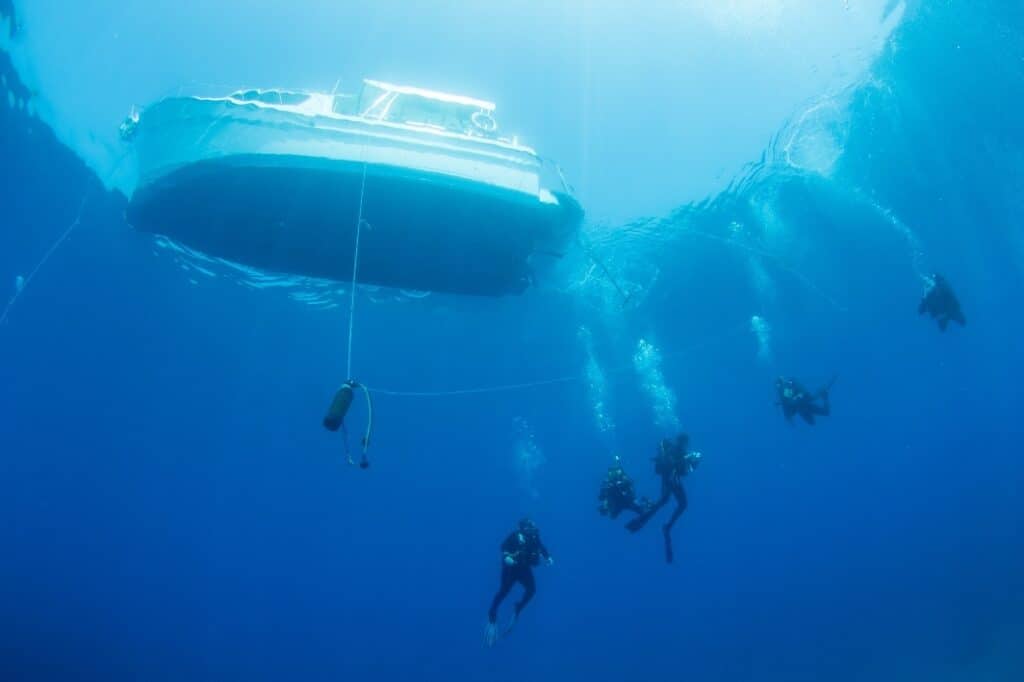
Can I combine diving with other activities?
Yes! Think hiking, waterfall adventure, horse riding, beach-hopping — and even snorkeling. Perfect if you’re traveling with non-divers too.
I actually put together a full snorkeling guide to southern Crete if you want to explore the island’s clear waters without a tank on your back. Check it out here.
Is the food safe?
Yes, and it’s delicious. Tap water is drinkable and food hygiene is excellent—even in the tiniest taverna.
What’s the visibility like?
Excellent. On a good day, you’ll get 20 to 30 meters.
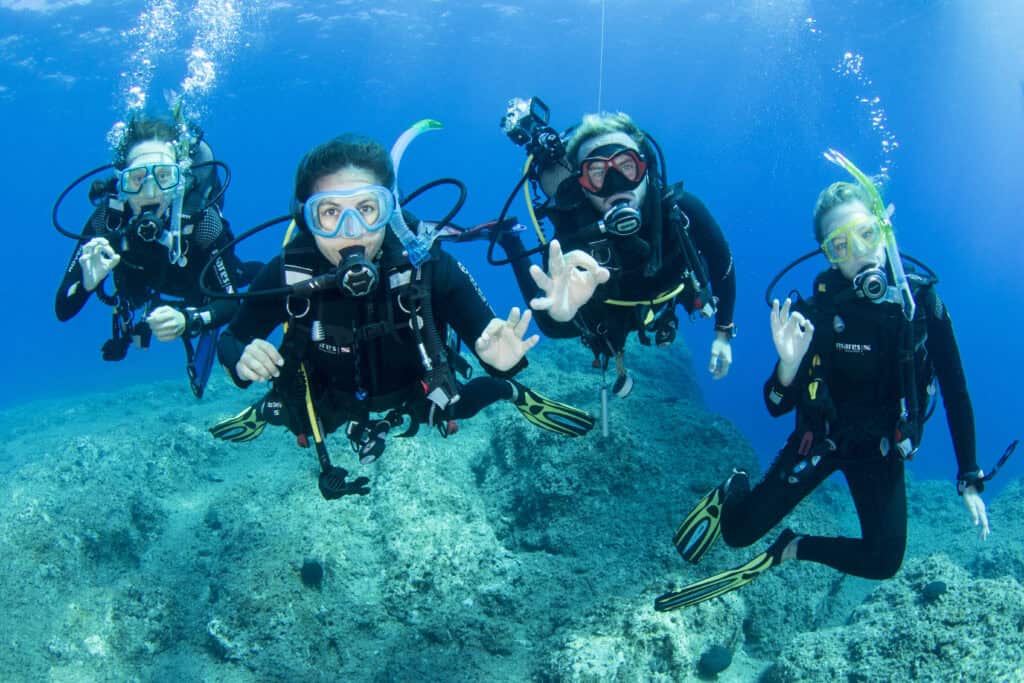
Do I need a wetsuit?
Yes, definitely. A 5–7mm full wetsuit is standard throughout the entire dive season in Southern Crete.
In the cooler months (April to June), divers often add a shorty on top for extra warmth.
The water warms up later in the season, but a long suit is still recommended for comfort and protection.
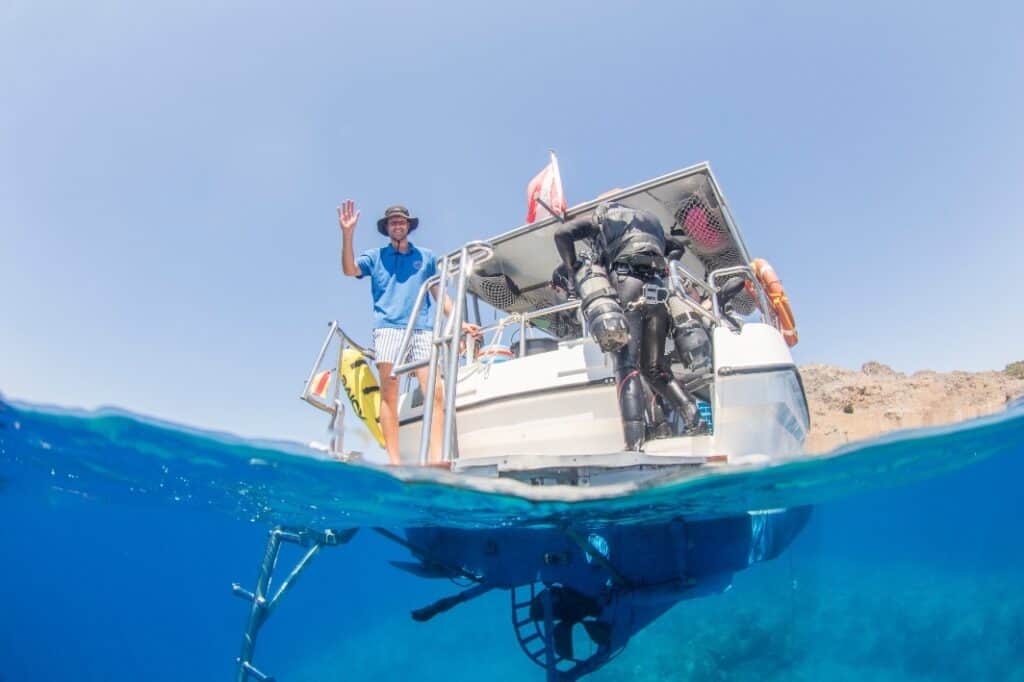
The Wrap-Up
Southern Crete may not be a total secret anymore, but it still offers that relaxed, under-the-radar vibe you won’t always find in the north. And it’s not just the diving that makes it special—it’s the whole experience.
The sunshine, the slow pace, the warm-hearted locals, the food (oh, the food), and of course, the stunning underwater scene.
And if you’re passionate about ocean conservation, this is a place where you can truly make a difference, from seagrass planting to marine life monitoring.
Looking for more inspiration? Don’t miss my snorkeling in Crete guide for topside adventures, and dive deeper into the story behind the dive school in my exclusive interview here. Enjoy and safe travels!

